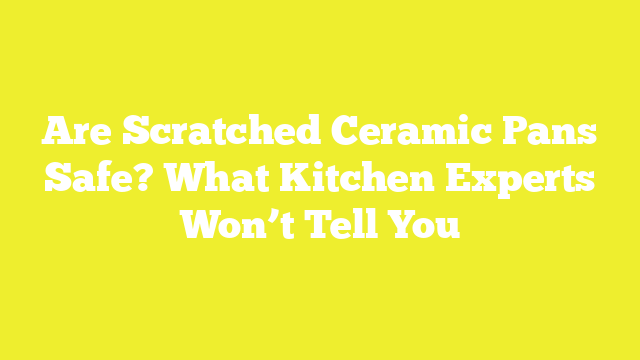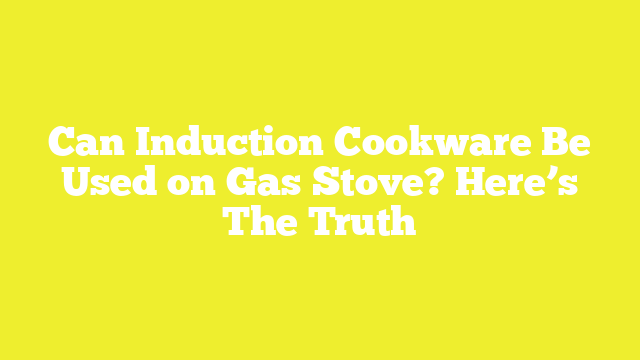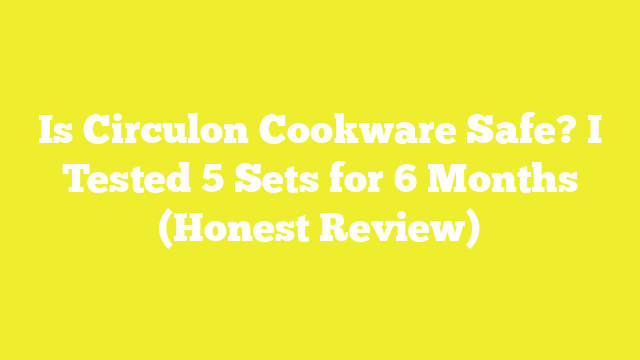Why Is Aluminum Cookware Banned in Europe? The Hidden Truth
The widespread ban on aluminum cookware in Europe might come as a shocking revelation to many home cooks. According to the World Health Organization, while adults can safely consume up to 2 milligrams of aluminum per kilogram of body weight daily, food cooked in worn-out aluminum cookware can contain over six times that amount.
This alarming fact has prompted many European countries to take decisive action against aluminum kitchenware due to potential neurological problems associated with metal exposure. In fact, a Dutch study reveals that regular cooking with aluminum pots and pans could lead to an intake of 2-3 mg aluminum per person daily, exceeding recommended safety levels.
In this comprehensive guide, we’ll explore why European authorities have restricted aluminum cookware, examine the scientific evidence behind these decisions, and discuss safer alternatives for your kitchen. We’ll also compare European standards with other global regulations to help you make informed decisions about your cookware choices.
The European Ban on Aluminum Cookware: Facts vs Myths
Contrary to popular belief, aluminum cookware isn’t entirely banned in Europe. Instead, strict regulations govern its manufacture and sale. The European Framework Regulation (EC) No. 1935/2004 specifically outlines the requirements for materials intended to come into contact with food.
Current regulations in Europe
The European Union maintains comprehensive oversight of cookware safety. Furthermore, since 2012, regulations have adjusted the conditions for aluminum-containing products to align with the European Food Safety Authority’s guidelines. Specifically, manufacturers must prove their products don’t transfer harmful amounts of aluminum into food.
Which countries have restrictions?
Rather than a complete ban, European nations follow unified safety standards. Notably, all EU member states require cookware to pass stringent safety tests before entering the market. The regulations focus on:
- Good Manufacturing Practice compliance
- Chemical safety verification
- Product labeling requirements
- Documentation standards
Key reasons behind the regulations
The European Food Safety Authority’s research forms the foundation for these regulations. Scientific studies revealed concerning effects on the nervous system, testes, and embryonic development in animal trials. Nevertheless, the Panel didn’t find evidence linking aluminum exposure through food to Alzheimer’s disease.
The regulations aim to minimize risk without imposing unnecessary restrictions. For instance, anodized aluminum cookware, which reduces metal transfer into foods, remains widely available. These measured approaches demonstrate how European authorities balance consumer safety with practical considerations.
Health Risks of Aluminum Cookware
Recent scientific studies have uncovered concerning evidence about aluminum cookware safety. Laboratory tests reveal that aluminum pots, particularly older ones, can release significant quantities of toxic metals during cooking.
Metal leaching into food
Modern research shows that aluminum cookware, especially when worn out, releases metals at alarming rates. A comprehensive study found that non-anodized aluminum cookware leached the highest amounts of metals, followed by anodized aluminum, steel, and copper. Moreover, six-year-old pots showed the highest concentrations of lead, cadmium, and aluminum compared to newer cookware.
Impact on different food types
The interaction between cookware and food varies significantly based on ingredients. Particularly concerning are:
- Acidic foods like tomatoes and citrus
- Alkaline ingredients
- Salty dishes
Acidic foods pose the greatest risk, as they trigger increased metal leaching. Subsequently, cooking acidic dishes in aluminum pots can result in aluminum concentrations exceeding six times the World Health Organization’s recommended daily intake.
Scientific studies and findings
Laboratory research has revealed multiple health concerns. A groundbreaking study discovered that water boiled in aluminum pots contained arsenic, lead, cadmium, and aluminum at varying concentrations. Additionally, research indicates that cooking in aluminum utensils can release 1-2 mg of metal into food per use.
The health implications are substantial. Scientists have observed increased levels of aluminum in brain tissues of patients with certain neurological conditions. Furthermore, research demonstrates that metal exposure from cookware can lead to various health issues, including:
- Kidney diseases
- Frequent headaches
- Potential cellular damage
Laboratory findings indicate that metal leaching increases with the cookware’s age and exposure duration. Consequently, older pots pose a higher risk, particularly when used for extended cooking periods.
How European Standards Differ from Other Regions
First and foremost, cookware standards vary significantly between Europe and other major regions. The Cookware and Bakeware Alliance (CBA) in the United States sets voluntary industry standards, unlike Europe’s mandatory regulations.
US regulations comparison
The CBA’s Engineering Standards include rigorous testing protocols that often align with European requirements. However, American standards place unique emphasis on handle assembly strength tests, requiring cookware to withstand 350°F oven temperatures while loaded.
North American consumers show distinct preferences, favoring:
- Riveted handles made from robust materials
- Darker color schemes (black, gray, metal)
- Traditional designs with proven durability
Asian market standards
In contrast, Asian-Pacific regulations present a complex landscape. China, Japan, and South Korea mandate conformity assessments from approved laboratories. These nations have implemented strict measures affecting specific materials, such as Bisphenol A (BPA).
Chinese manufacturers, as a result, often seek multiple certifications including FDA approval and ISO 9001. Their quality control process encompasses:
- Raw material inspection
- Pre-production testing
- Production monitoring
- Pre-shipment verification
The U.S. International Trade Commission has ultimately imposed duties ranging from 20% to 140% on Chinese aluminum products, highlighting the intricate nature of international cookware trade regulations. This decision aims to address concerns about unfair pricing practices while ensuring product safety standards remain upheld.
Safe Alternatives to Aluminum Cookware
With mounting concerns about aluminum cookware, several safer alternatives have emerged in recent years. These options primarily focus on safety without compromising cooking performance.
Stainless steel options
Stainless steel stands out as one of the most reliable alternatives, fundamentally because of its non-reactive nature. Professional chefs often prefer this material for its exceptional durability and resistance to corrosion. High-grade stainless steel presents minimal risk of leaching, even when cooking acidic foods.
Cast iron benefits
Cast iron cookware offers remarkable versatility and longevity. This time-tested material can withstand temperatures from stovetop to oven, making it ideal for various cooking methods. Cast iron pans retain heat exceptionally well, ensuring steady cooking temperatures. Beyond its cooking benefits, cast iron naturally enriches food with small amounts of dietary iron, which can be beneficial for those at risk of iron deficiency.
Ceramic cookware safety
Modern ceramic cookware combines safety with convenience. These pots and pans feature a nontoxic ceramic coating applied over a metallic base. The safety features of ceramic cookware include:
- Complete freedom from PFAS chemicals and heavy metals like lead and cadmium
- Higher heat tolerance compared to traditional nonstick coatings
- Natural non-stick properties without harmful chemicals
For optimal performance and longevity, ceramic cookware requires specific care. Generally, using low to medium heat settings preserves the non-stick coating. Essentially, wooden or silicone utensils work best to protect the surface from scratches.
Medical experts at Cleveland Clinic emphasize that choosing the right cookware material can significantly impact long-term health. Ultimately, these alternatives offer peace of mind while delivering excellent cooking performance. The key lies in selecting cookware that aligns with your cooking style and maintenance preferences.
Conclusion
Scientific evidence clearly shows the risks associated with aluminum cookware, particularly when cooking acidic foods or using worn-out pots and pans. Though European countries haven’t completely banned aluminum cookware, their strict regulations highlight the need for careful consideration of our cooking equipment choices.
Safety concerns about metal leaching become more significant as cookware ages. Research demonstrates that older aluminum pots can release harmful amounts of metals, especially during extended cooking periods. This fact makes regular assessment of our cookware condition essential for maintaining kitchen safety.
Thankfully, several reliable alternatives exist. Stainless steel offers durability and safety, while cast iron provides versatility and potential health benefits through iron enrichment. Ceramic cookware presents another excellent option, combining non-toxic materials with practical cooking performance.
Making smart choices about cookware materials plays a crucial role in protecting our health. Whether we choose stainless steel, cast iron, or ceramic options, understanding the benefits and limitations of each material helps ensure safer cooking practices. Regular inspection of existing cookware and timely replacement of worn items remains key to maintaining a healthy kitchen environment.





